Red-winged blackbirds call from the wetland, bluebirds hunt insects from our oak’s low branches, and robins find an easy meal in the softened soil. Spring has not quite arrived here in Pennsylvania, but it’s coming.
The happiness my guest this month, Tabassam Shah, feels when she focuses on birds radiates out to those around her. It infuses her work as a poet, activist, and educator, too. I hope her dedication and enthusiasm inspire your own outdoor adventures!
Interview: Tabassam Shah
What sort of work do you do?
I am a poet, author, storyteller, educator, and activist. A leading motivation for me to write is to explore the connection we have to the wider world. To these ends I publish poems addressing this theme in journals, anthologies and newsletters; I also published a collection of poems in 2022 entitled Red & Crescent Moons.
As an educator and activist, I enjoy helping others understand the language of nature and see natural spaces with curious eyes. I also enjoy building and leading community involvement in social and environmental justice awareness for the common good. I host workshops on writing outdoors and I lead workshops on social justice poetry for the organization Poets Against Racism & Hate USA.

What aspect of your work has the most personal meaning for you?
I get excited when an attendee of a workshop I am hosting experiences joy after being allowed to let their curiosity about something unfamiliar grow into an appreciative awe. I encourage participants to open their minds and hearts and I instruct them to use methods such as nature journaling or writing poetry outdoors in hike-and-write sessions.
Writing outdoors is an especially transformative experience for my workshoppers. Being in nature unblocks us by muting the mind’s wanderings as we allow ourselves to be stimulated by nature’s happenings and phenomena. Self and world begin to intertwine, and at the same time writing in nature is an embodied experience because it allows the body to express engagement with the natural world. I find that children are easily taken with writing outdoors, whereas adults take some coaxing. It is most gratifying for me to see an adult write a poem outdoors after they allow their initial apprehensiveness to dissolve.
Being outdoors is so important. In a study, the EPA found that the average American spends less than 8% of their time outdoors. How can this be when we know that being outdoors is physically and emotionally good for everyone?
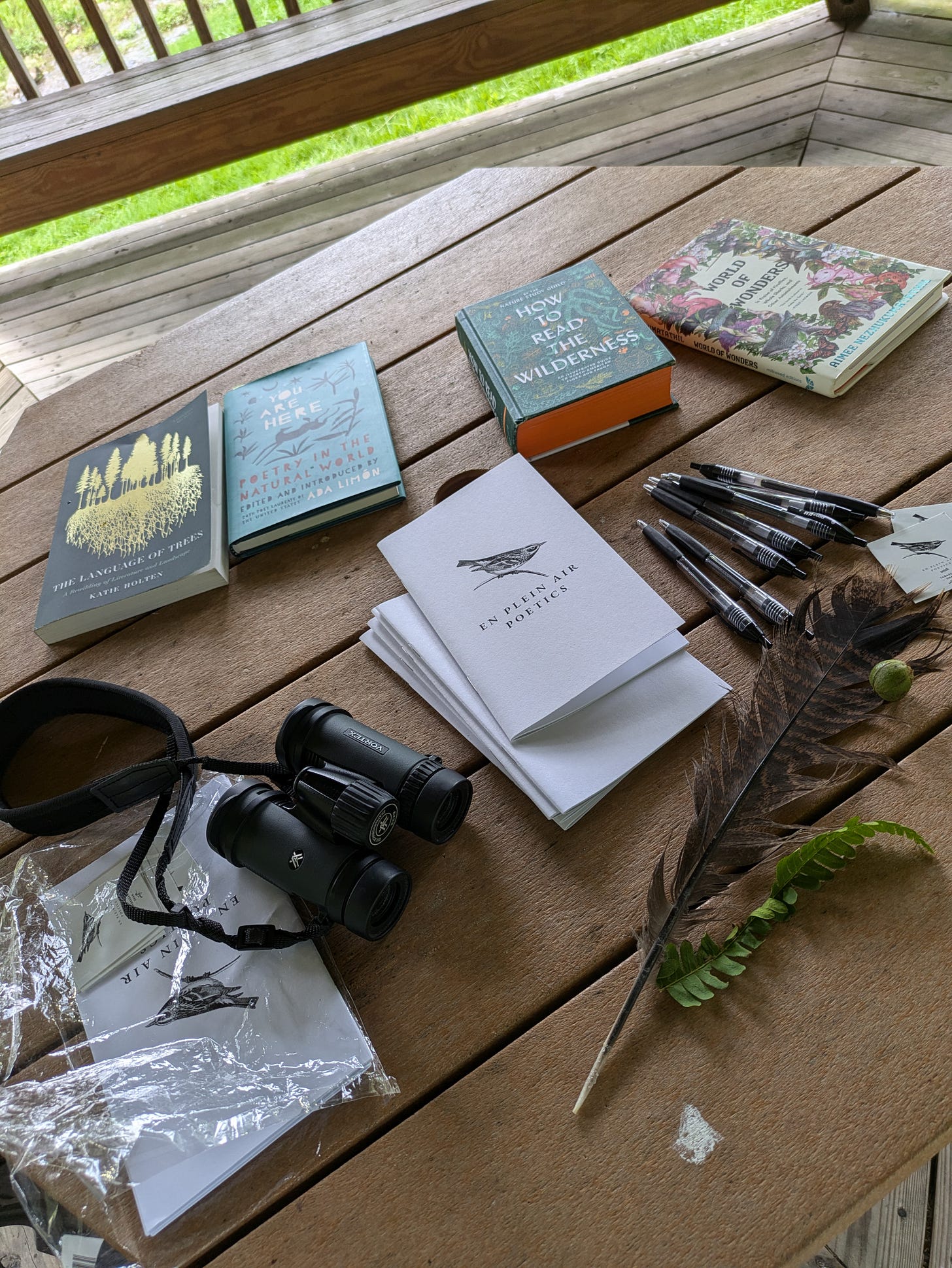
How are science, art, and writing part of your work, and how is the interaction between these areas important to you?
Curiosity leads me to research anything that catches my imagination. Science inspires my poetry and art. Here’s a scenario in which I often find myself: I frequent my local patch of woods in winter and I notice a chickadee hanging from a tree bud, perhaps extracting a hibernating insect. And then it flies to a white pine to excavate cone seeds. It’s a frenzy, and I wonder how capable these humble little chickadees are at wintering—especially compared to my own strategies of hunkering down and limiting activity.
This observation leads to me to investigate the science behind the chickadee’s survival, and I learn that their brains increase in size in winter so that they can better remember where they have cached all the seeds they extracted. I grow to appreciate this common bird even more. The attentiveness I lean into opens up an urge to write about the chickadee’s remarkable tale of survival. And that call to conserve rings strong within me, fueling my work to educate others, and also to give them opportunities to make similar connections with the natural world. For we cannot hope to protect something without first noticing and understanding it.
Is there a particular scientific or environmental problem that feels important to you? What do you do about that?
As I am particularly fond of birds, I often think about what plan we as a society can develop to stop birds from disappearing. Research reveals that since the 1970s we’ve lost nearly a third of all our birds in North America. It saddens me that our human-altered landscapes are losing their ability to support bird life.
But, I believe that the work I do can help birds. I’ve already mentioned that I enjoy providing people with opportunities to cultivate appreciation for nature in outdoor workshops that combine observation and writing, and how this opens up the potential for people to advocate for the things in nature they learn about. So, I often cultivate bird appreciation in my outdoor workshops.
I also delve into other ways our communities can help birds. I volunteer for a Bird Friendly Habitat committee to establish bird friendly native plant gardens, and I also educate people on how to create them in their own yards. Recently, I’ve started writing picture books for children. Several of my manuscripts are bird-centric and tap into a child’s sense of awe for the avian world, while also emphasizing the importance of supporting ecosystems for wildlife to flourish.
Do you have a memorable experience that has solidified your belief in the value of the work that you do? (from Shirlene Chiam, 012)
In the summer of 2023, I hosted a workshop entitled “Plein Air Poetics with Poet Tabassam Shah: Writing with Body in Nature, Environment & Place” at the inaugural Bridge Literary Arts Center Litfest in Franklin, Pennsylvania. Participants joined me for a short walk through the woods where the sights and sounds of the forest and spring waters were supposed to fuel their inspiration for their writing.
Plein air writing uses nature as a writing prompt and encourages writers to observe and react while being out of doors or out on the trail, so I charged attendees with drafting a poem or other genre of writing while on foot and/or post-jaunt for reflection. Although it poured and I worried that no one wanted to be outdoors, my attendees braved the heavy rain shower and headed with me to the woods. We were all adults, but playfulness ensued, and we had puddle jumpers and umbrella twirlers. The joy was contagious. After we got soaked, we had a wonderful writing session under a pavilion while the dripping continued. That rainy afternoon is the most memorable writing-in-community event I have ever encountered in all my years writing poetry.
How does your identity affect your work?
My distinct experiences as an aunt, wife, daughter, and friend have certainly informed the perspectives with which I do my work. And, as a woman with brown skin and Pakistani heritage in this country (US), I grew up not seeing anyone who looked remotely like me in a picture book, let alone in an outdoor setting in any media. Media was, and still is, saturated with all the stereotypical tropes for Asians and Muslims.
As a child, I was fortunate that my parents shared their love for the outdoors with me and took me to wild places for picnics and hikes. But I did wonder why very few kids outside looked like me. Accessibility to nature and the outdoors depends upon socioeconomic factors, and inclusivity in the outdoors allows everyone to connect with the natural world. So, especially when I work with children, I think it is important to create conditions where nature is accessible to children of all backgrounds where they are given the chance to be filled with awe so they will grow to be curious adults, implanted with a sense of wonder and connectedness to the wider world.
What inspires you?
I have to say birds are the primary inspiration for me. Through all the challenges they face, they can be resolute and survive. Many peregrine falcons that formerly lived in habitats such as cliffs and steep slopes have adapted to cityscapes by using high rise buildings as their habitat. Several city web cams record the domestic lives of falcon pairs as they rear chicks on balconies. Clever crows drop nuts on roads for cars to crack open—they even wait for traffic to stop before retrieving the nuts.
Birds can thrive and defy many odds, and this is a reminder for me that I too can rise to my challenges. In this way, birds provide me with a moment to ground myself, even if the world is full of foment. For me, this communion with birds is essential to living.
Are you interested in collaborating with other groups or individuals on science-art-writing projects? If so, what sorts of collaboration are you interested in, and what are you most excited to share?
I find it very inspiring when a collaboration combines scientists with enthusiasts from all walks of life. I volunteered at a BioBlitz last summer at the Highlights Foundation property in the upper Delaware River valley in Northeastern Pennsylvania. Teams of scientists and enthusiasts collected and recorded all living species they came upon within in a 24-hour period. The objective for a BioBlitz is to establish the level of biodiversity in an area. Of course, I was on the bird team! We hiked day and night to record all the birds we saw and heard.
The fun thing about this event was that many teams put their specimens on display, and the public could get up and close to them. I hosted a nature journaling workshop for children and adults on site, and I instructed my attendees to pick specimens on display that stood out to them and record their observations in a nature journal. I encouraged them to write poems about their chosen specimens and provided them with tools of observations and prompts to help with writing. The success in this workshop was due to the accessibility of the science for my workshoppers. They were able to view specimens closely, and scientists were on hand to answer their questions. I was there to guide them as they crafted their creative responses to the specimens of their choice.
Thank you, Tabassam! Where can readers find you?
I’ll be reading poems at Firefly Bookstore in Kutztown, Pennsylvania on Monday, April 14th at 6:30pm as part of their celebration of National Poetry Month. On April 23, I’ll lead a virtual workshop using epistolary poetry, hosted by the group Poets Against Racism & Hate USA. On September 13, I’ll be leading a hike-and-write at the Bridge Literary Arts Center LitFest in Oil City, PA.
To keep track of these events and more, please visit Tabassam’s website.
One last note! Please join us for the Creature Conserve Mentorship Showcase, March 28-30th. All events take place online. I’ll be part of the keynote presentations, which run from 6 to 8pm ET on Friday the 28th (I should be on around 7pm ET). Our fabulous line-up of Mentees will present their projects on Saturday and Sunday, from 8am to 1pm ET each day. All events are free and open to the public (online, but please register for a link).




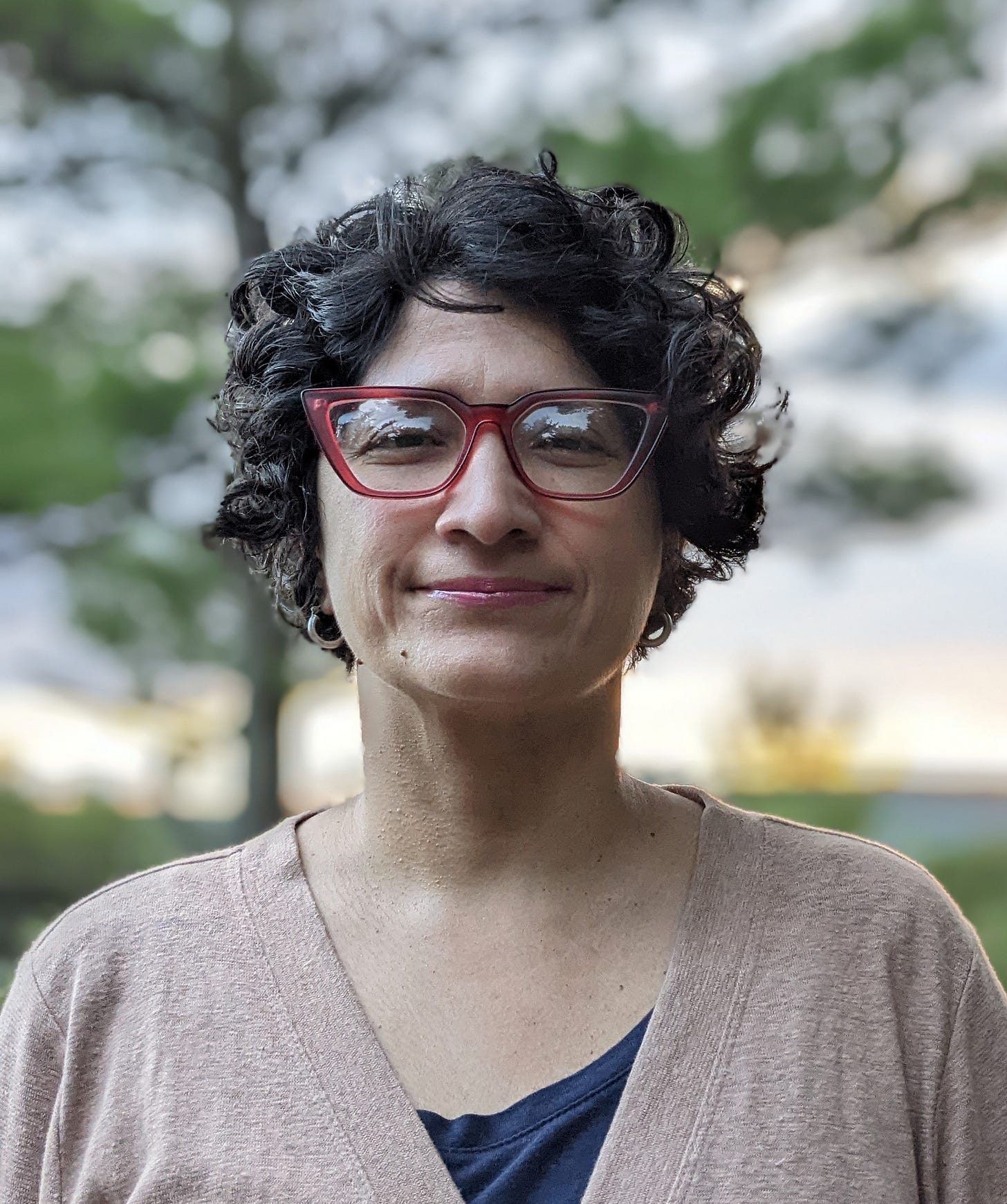
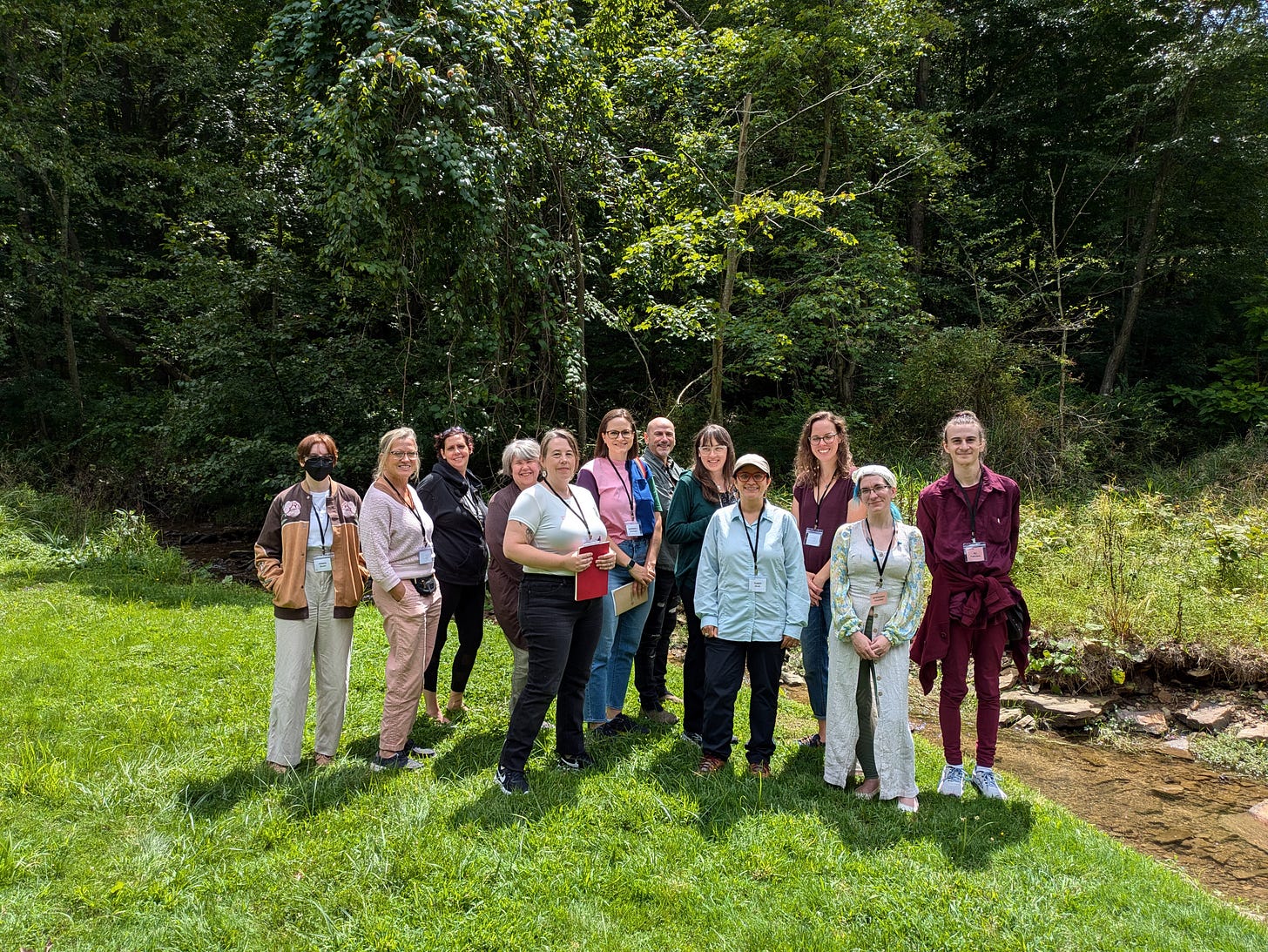
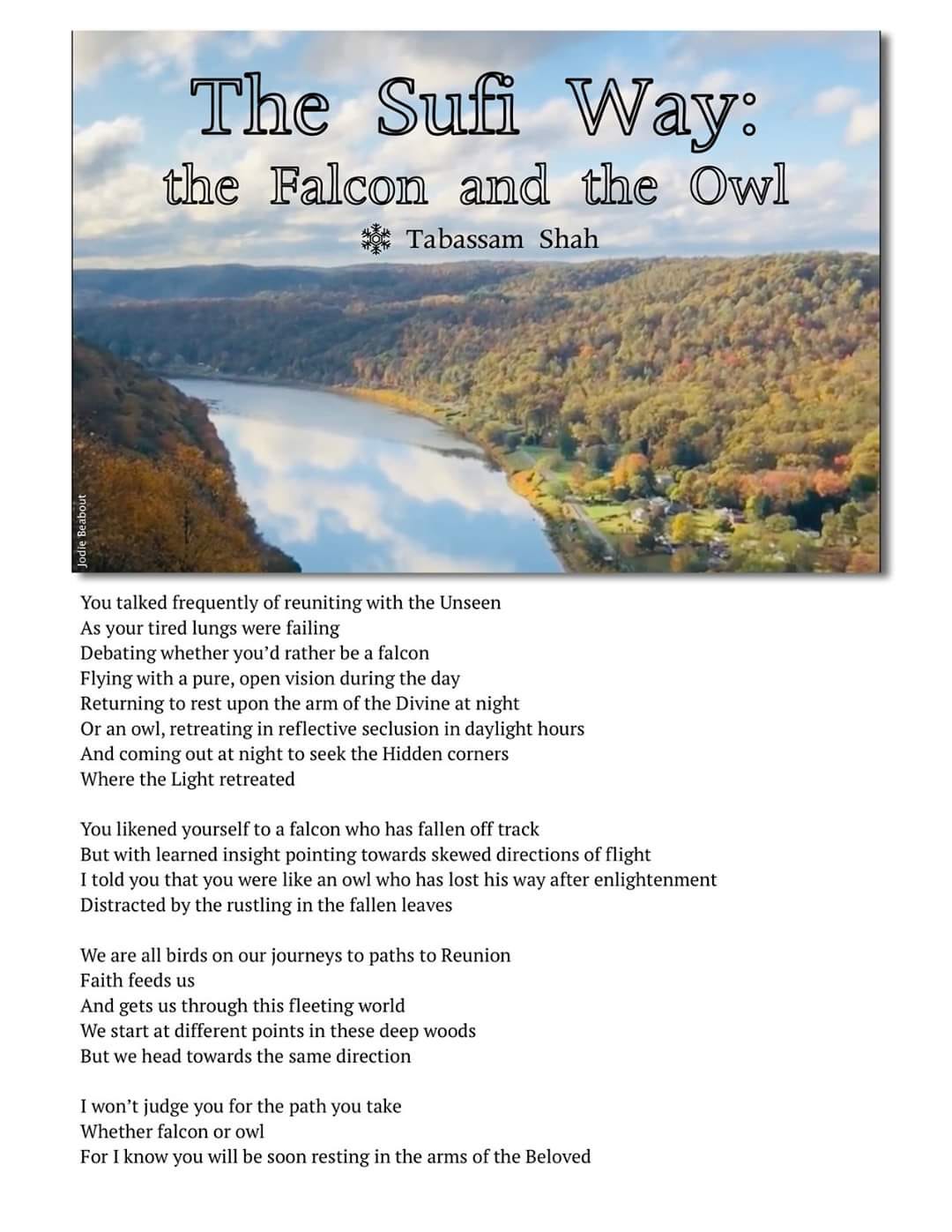
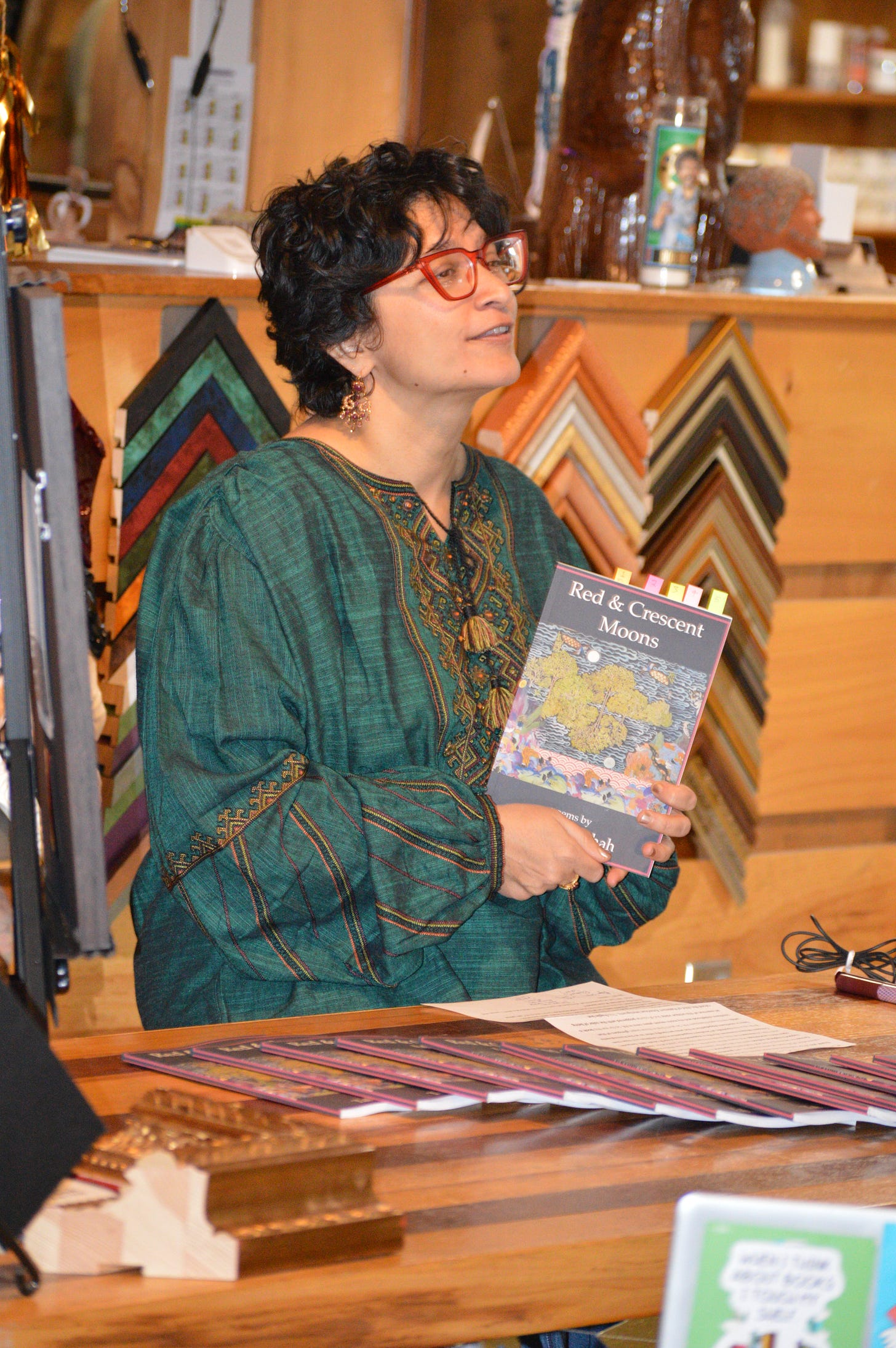
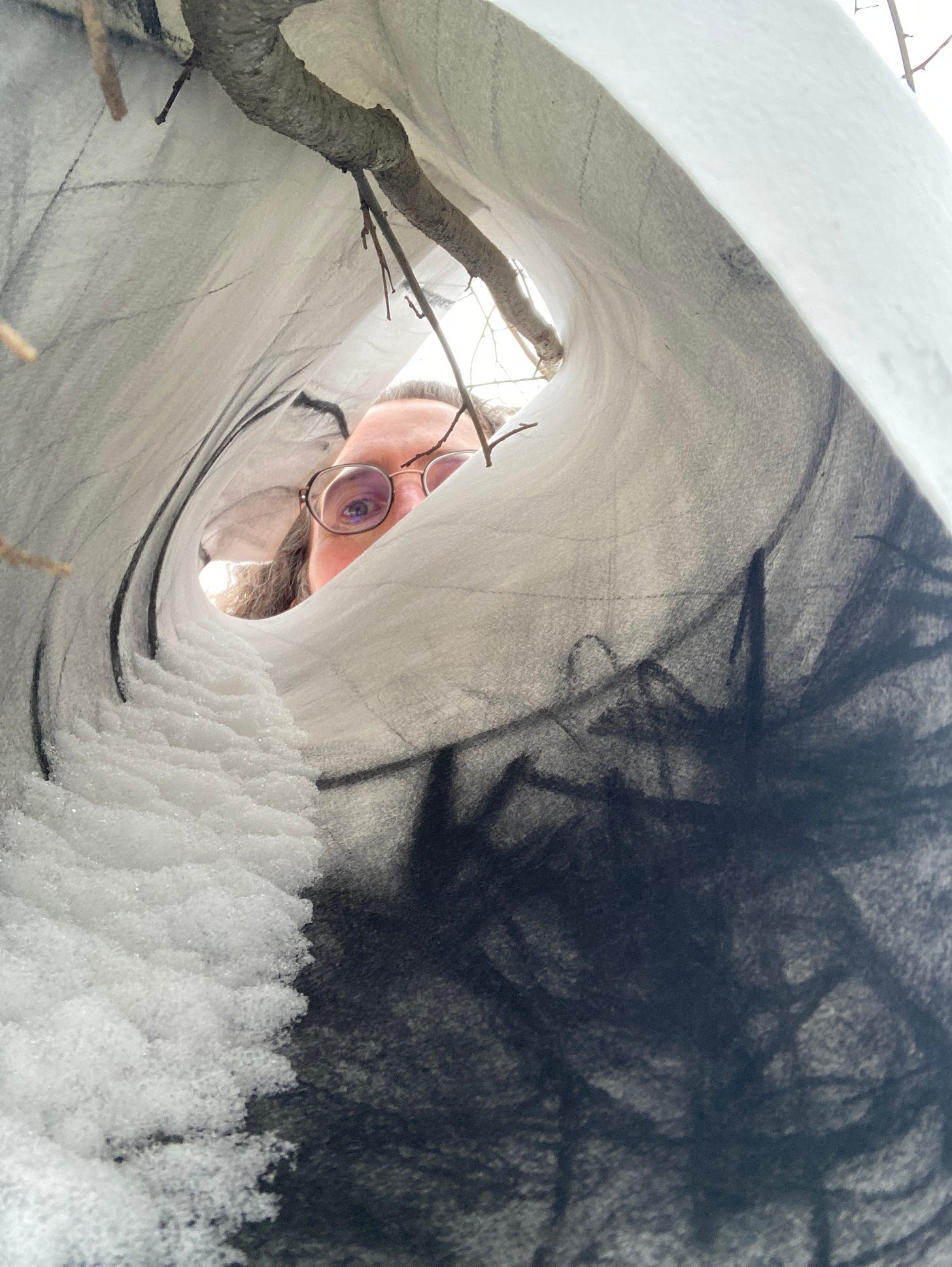
Another great interview with an interesting person doing inspiring work! Love it. Also: brains that grow in Winter?! WOW. 🤯